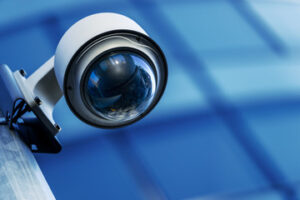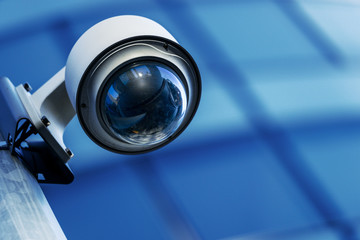License Plate Recognition (LPR) is a type of technology that can read vehicle license plates. License Plate Recognition Camera is often used by law enforcement and government agencies.
They record every car that passes, and their data is compared to a database to flag anything suspicious.
Property managers juggle many responsibilities and want actionable evidence without sifting through hours of footage. That’s why Flock has created a complete license plate recognition solution with hardware, permits, installation and maintenance for an annual subscription.
The ability to quickly identify any vehicle on the scene of a crime or accident is becoming increasingly important. Video security cameras capable of detecting license plates can make it much easier for users, or the authorities, to find the vehicle that’s involved in an incident.
License Plate Recognition Cameras (LPR), also known as Automatic Number Plate Readers (ANPR) or Automated License Plate Recognition Cameras are used by law enforcement agencies, parking management companies and commercial vehicle fleet managers to record license plate numbers as vehicles pass by. They can be used alone or as part of a larger video surveillance system.
Many of these cameras are located in intersections and highway overpasses. They are capable of photographing thousands of license plates per minute. The information recorded includes the number, letters and date of issue for each plate. It is also possible for the cameras to capture a digital image of the driver. Some systems can even distinguish between different vehicle models.
The data collected by these cameras is sometimes pooled into regional systems. This allows police departments to identify the location of vehicles that have been seen in other jurisdictions. This information can then be used for investigative purposes, including tracking the movements of people who have been involved in criminal activity.
However, this method of surveillance has raised concerns about privacy rights among some Americans. The ACLU has sent requests for public records to police departments in over 600 cities to learn more about how these cameras are being used. Some of these requests have revealed that the government is keeping vast databases of innocent motorists’ location information for years or even indefinitely, with few if any restrictions on how this data might be used.
Despite the growing popularity of this technology, it is possible to evade these cameras. Several methods exist, including using a license plate cover or spraying the license plate with special paint. Both of these methods are controversial, but they work well enough to allow a car owner to avoid the expense and inconvenience of getting a traffic ticket.
Cameras
A key component of license plate recognition systems is the camera that captures images that are then processed by optical character recognition software. These cameras are designed to provide high-quality license plate reading results in a variety of lighting conditions and vehicle-to-plate distances. This is important because the success of an LPR system hinges on the quality of the images that are captured. Incorrect or low-quality images will result in inaccurate recognition.
There are a few factors that need to be considered when choosing the right camera for your application. First, you want to make sure that the camera is positioned at an angle that is less than a 30-degree angle above the target area. Exceeding this angle will result in distortion, making it difficult to read the plate number. Additionally, you’ll want to choose a camera that can be used in a choke point, which is an area where cars move in a predictable way, such as an intersection or parking lot entrance.
Another consideration is the sensitivity of the camera to light. A quality camera will use an infrared illuminator to provide illumination in areas that cannot be seen by the human eye, such as in total darkness or at night. This will ensure that the camera can effectively read plates at a distance even in dim or dark conditions.
Finally, you’ll want to choose a high-resolution, infrared license plate camera that provides the best image quality. This is especially important because the license plate recognition process requires a high level of accuracy in order to read the plate numbers accurately. A quality camera will also use WDR (wide dynamic range), adjustable shutter speed, and headlight compensation to reduce image distortion and improve the clarity of the plate images.
Unlike reactive security solutions, License Plate Recognition technology provides proactive, data-driven, actionable evidence that can prevent crime before it occurs. According to the International Association of Chiefs of Police, a license plate is the number one piece of evidence law enforcement can use to solve crimes like kidnapping, financial fraud, drug trafficking, and more. With Flock Safety, you can deploy license plate recognition at your community to alert police if a known suspect car is entering your neighborhood.
Detection
There are a number of factors that go into getting an image that is good enough to be recognized. The best systems do a lot of work to improve the digital image that is captured, then use optical character recognition to read alphanumerics from that image. Some systems process that information at the lane location, while others transmit the images to a central computer and do the OCR processing there.
Getting the right image can be difficult, especially in low-light conditions. Many ANPR cameras have built-in infrared (IR) illumination, which helps with this, but the lighting on a vehicle can also affect how well a plate is read.
Proper camera positioning is important, too. Exceeding threshold angles of incidence between the camera lens and a license plate will significantly decrease the likelihood that the system will be able to obtain usable images. This is particularly true in areas where the license plates may be obscured by parked cars or by other obstructions like fenders or signs.
Other variables that can affect a camera’s ability to capture plates include:
When a camera is mounted in an area where there are many vehicles that will be moving through it, the chances of false captures are going to be higher than if the camera is installed in an area where few cars will be passing. This is why it’s important to focus on choke points, such as parking lots entrances and exits, or alleyways and roads.
Some people try to evade ANPR cameras and road-rule enforcement cameras in general by using a variety of methods, including plate covers and sprays. These attempts to evade are largely futile, since the plate numbers can still be captured by the system.
Many law enforcement agencies have a list of plates that they are actively looking for, and the system will alert officers when it sees those plates. This can be useful for generating revenue and stopping citation scofflaws. These hotlists can be configured to include both low-level misdemeanors and traffic offenses. Some agencies even create their own lists, which can be accessed by the patrolling officer in a squad car, or a central computer.
Storage
Many ANPR systems are able to store license plate images indefinitely, along with the date and time of each capture. This information can be useful in a variety of ways, including as evidence for an investigation or to help identify the make and model of a vehicle. These cameras can also be used to monitor traffic patterns or to identify stolen vehicles.
Property managers can use license plate recognition to streamline building access for residents and visitors. This camera type can be strategically positioned and zoomed to cover specific choke points, such as driveways, parking lots, and gates. Unlike security cameras that simply record images, LPRs can actually read the vehicle’s license plate number. This data can then be sent to a database for processing or compared to existing records.
When selecting a system, consider whether the camera’s field of view is wide enough to capture most or all vehicles that drive by. Additionally, look for a camera that features light suppression to minimize headlight glare. Finally, a good camera will have high durability ratings and resistance to vandalism.
Another important consideration is a software framework that the camera and the license plate recognition software can work off of. This can include a set of rules for the camera to follow, allowing it to recognize certain types of vehicles, identify characters and fonts in a plate, or transcribe a license plate into text.
While these systems are often used by government agencies or businesses that have large areas of public activity, they can also be found in residential buildings and condominiums. In fact, homeowners’ associations often use these cameras to increase safety and prevent crime.
These systems can be integrated with other security systems and can be installed at entrances to buildings, parking garages, or other outdoor spaces. These cameras can be paired with intercoms to provide visitors and residents with a secure way to enter the building, or with smart doorbells to allow homeowners to verify who is at their front door before granting access. This technology can be an excellent solution for those looking to improve the safety of their community, improve resident retention, and boost the property’s reputation.

